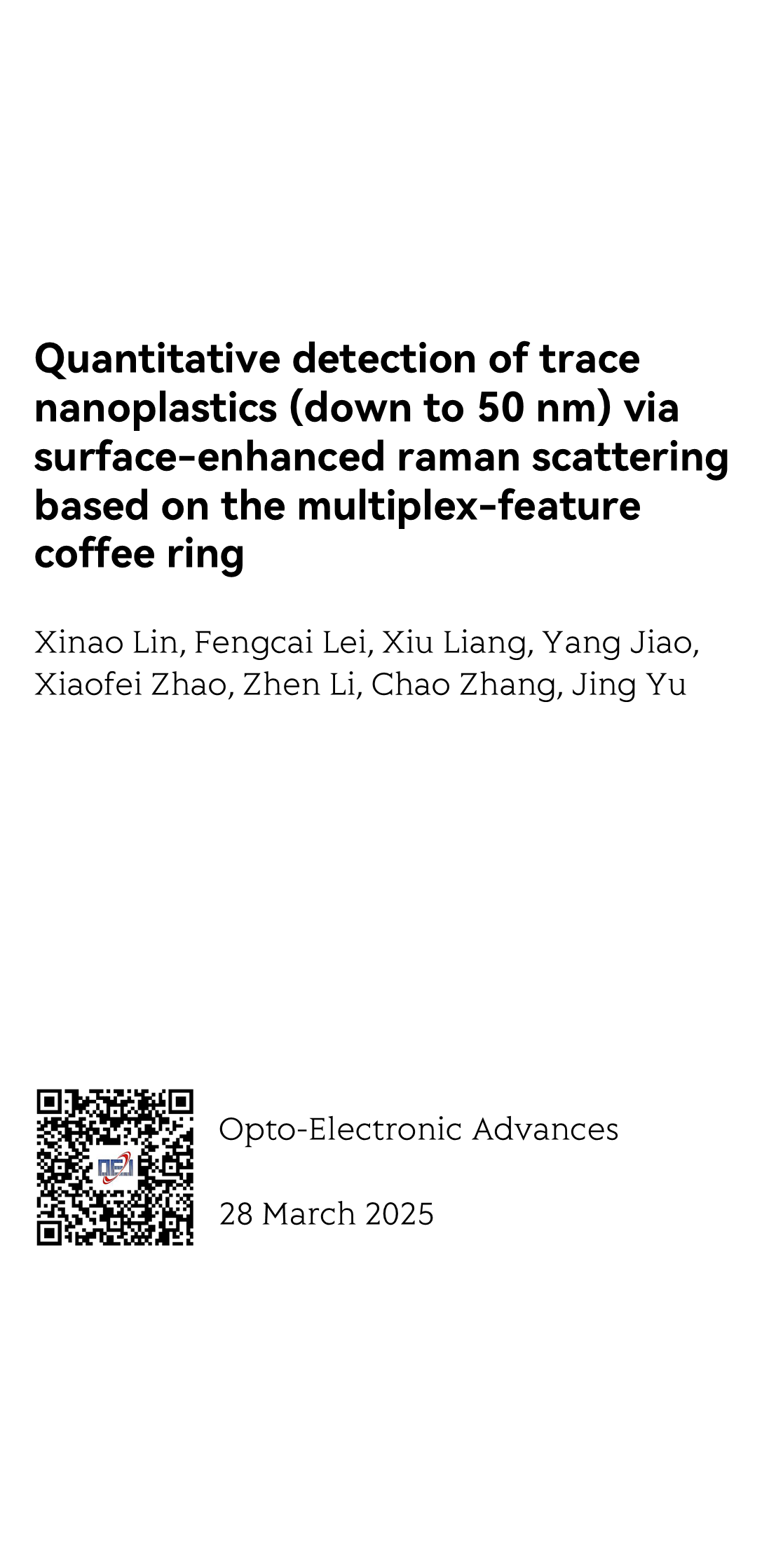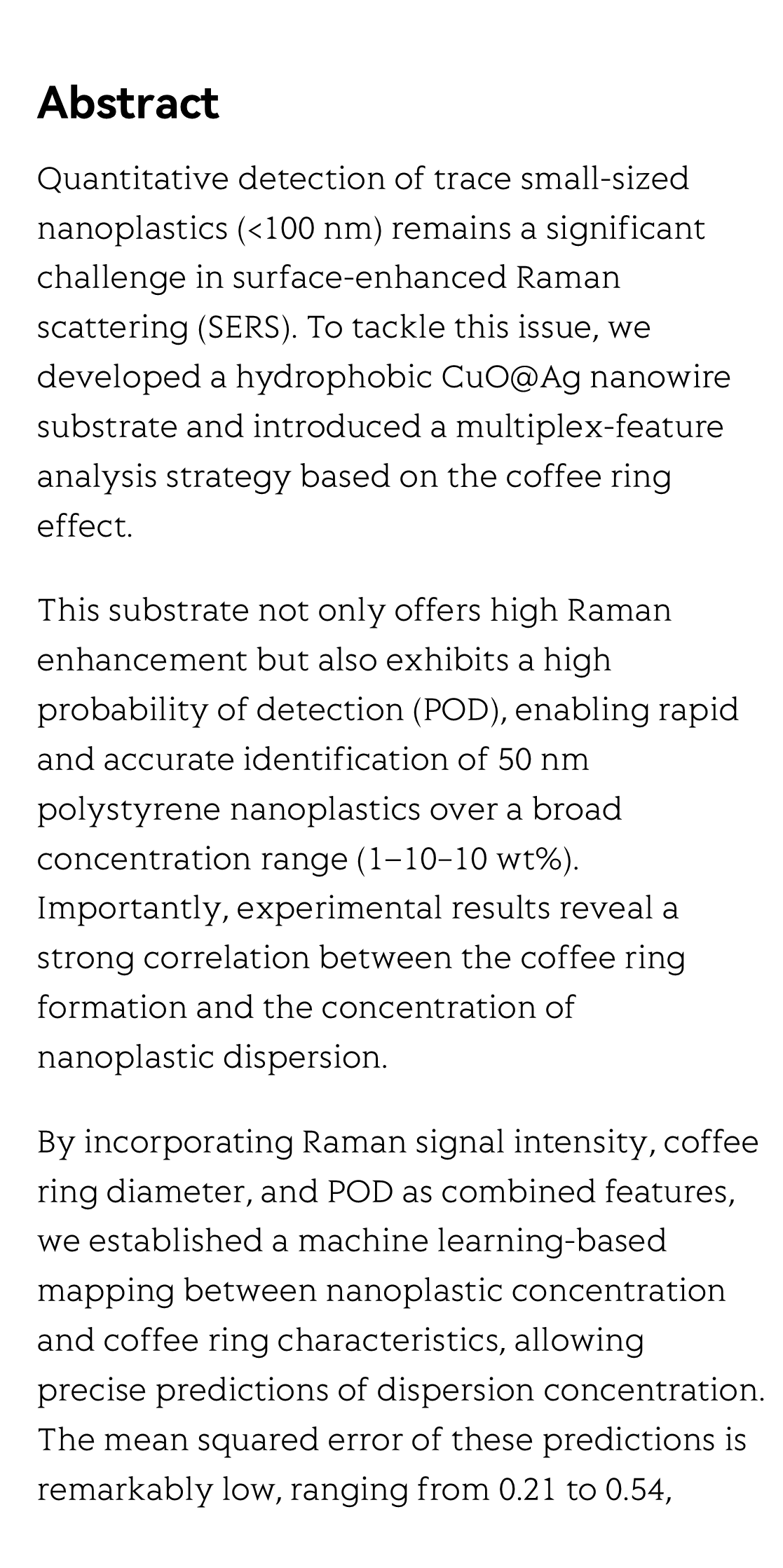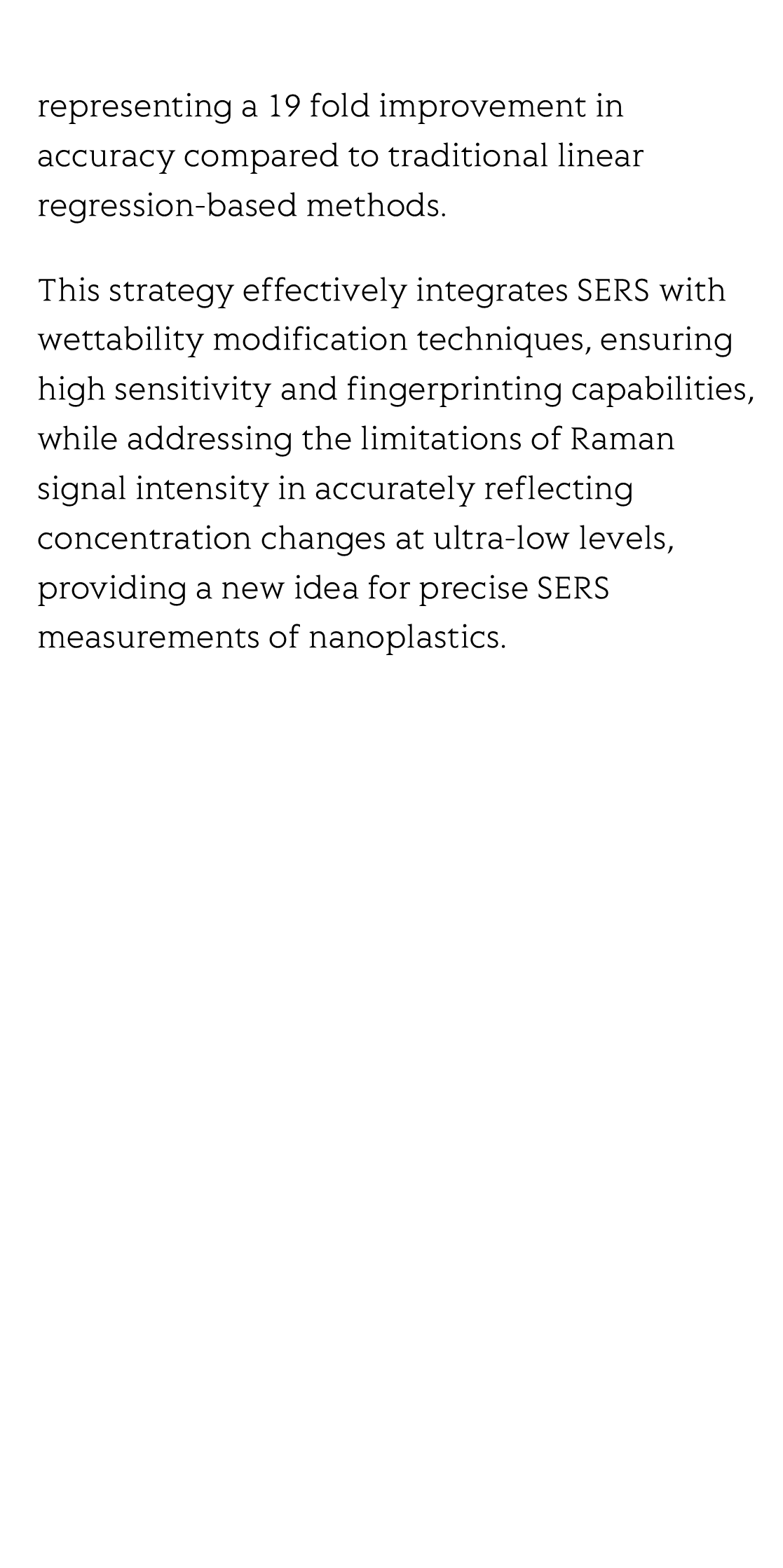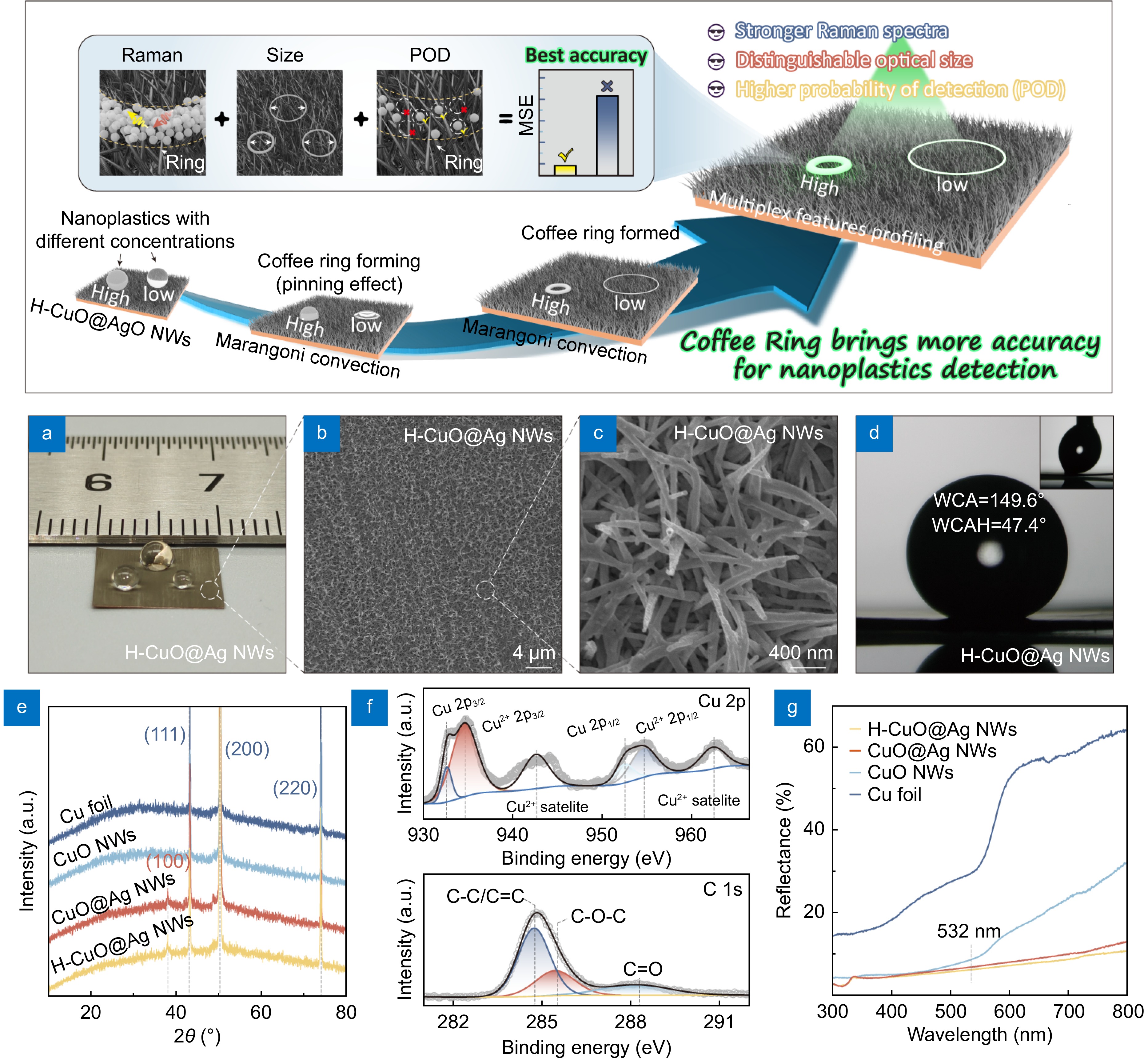(Peer-Reviewed) Quantitative detection of trace nanoplastics (down to 50 nm) via surface-enhanced raman scattering based on the multiplex-feature coffee ring
Xinao Lin 林昕翱 ¹, Fengcai Lei 雷风采 ², Xiu Liang 梁秀 ³, Yang Jiao 焦扬 ¹, Xiaofei Zhao 赵晓菲 ¹, Zhen Li 李振 ¹, Chao Zhang 张超 ¹, Jing Yu 郁菁 ¹
¹ Shandong Provincial Engineering and Technical Center of Light Manipulation, School of Physics and Electronics, Shandong Normal University, Jinan 250014, China
山东 济南 山东师范大学物理与电子科学学院 山东省光场调控工程技术研究中心
² College of Chemistry, Chemical Engineering and Materials Science, Shandong Normal University, Jinan 250014, China
山东 济南 山东师范大学化学化工与材料科学学院
³ Advanced Materials Institute, Qilu University of Technology (Shandong Academy of Sciences), Jinan 250014, China
山东 济南 齐鲁工业大学(山东省科学院)新材料研究所
Opto-Electronic Advances
, 2025-03-28
Abstract
Quantitative detection of trace small-sized nanoplastics (<100 nm) remains a significant challenge in surface-enhanced Raman scattering (SERS). To tackle this issue, we developed a hydrophobic CuO@Ag nanowire substrate and introduced a multiplex-feature analysis strategy based on the coffee ring effect.
This substrate not only offers high Raman enhancement but also exhibits a high probability of detection (POD), enabling rapid and accurate identification of 50 nm polystyrene nanoplastics over a broad concentration range (1–10−10 wt%). Importantly, experimental results reveal a strong correlation between the coffee ring formation and the concentration of nanoplastic dispersion.
By incorporating Raman signal intensity, coffee ring diameter, and POD as combined features, we established a machine learning-based mapping between nanoplastic concentration and coffee ring characteristics, allowing precise predictions of dispersion concentration. The mean squared error of these predictions is remarkably low, ranging from 0.21 to 0.54, representing a 19 fold improvement in accuracy compared to traditional linear regression-based methods.
This strategy effectively integrates SERS with wettability modification techniques, ensuring high sensitivity and fingerprinting capabilities, while addressing the limitations of Raman signal intensity in accurately reflecting concentration changes at ultra-low levels, providing a new idea for precise SERS measurements of nanoplastics.
Flicker minimization in power-saving displays enabled by measurement of difference in flexoelectric coefficients and displacement-current in positive dielectric anisotropy liquid crystals
Junho Jung, HaYoung Jung, GyuRi Choi, HanByeol Park, Sun-Mi Park, Ki-Sun Kwon, Heui-Seok Jin, Dong-Jin Lee, Hoon Jeong, JeongKi Park, Byeong Koo Kim, Seung Hee Lee, MinSu Kim
Opto-Electronic Advances
2025-09-25
Dual-frequency angular-multiplexed fringe projection profilometry with deep learning: breaking hardware limits for ultra-high-speed 3D imaging
Wenwu Chen, Yifan Liu, Shijie Feng, Wei Yin, Jiaming Qian, Yixuan Li, Hang Zhang, Maciej Trusiak, Malgorzata Kujawinska, Qian Chen, Chao Zuo
Opto-Electronic Advances
2025-09-25







